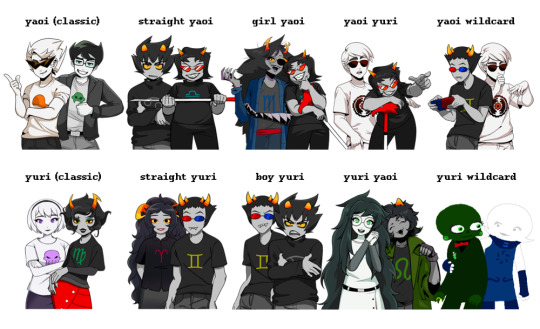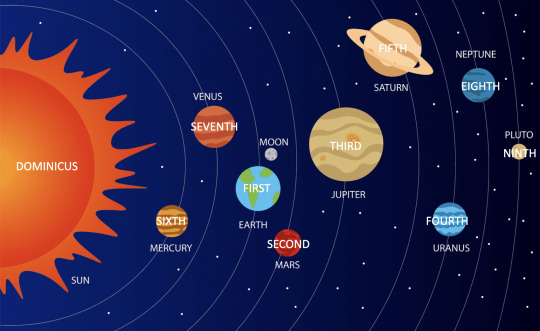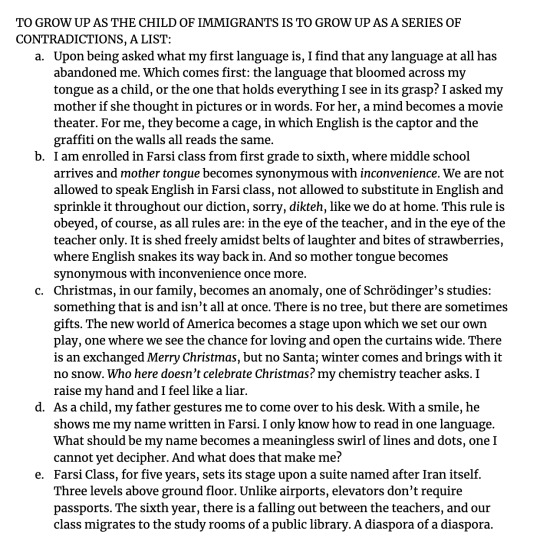#shamsisms
Text
you can improve literally any word by adding “girl” in front of it btw. girlscared. girlnormal. girlweird. girlsilly. etc. girl can be such a beautiful focal point of anyone’s vocabulary
52K notes
·
View notes
Text

oh the shamsism of this
#having to stop being a hopeless romantic bc of her duty YEAHHHHH i am in my feelings#this is so important to me actually#deep down she’s a little girl who wants to fall in love
8 notes
·
View notes
Text
ISLAM 101: Spirituality in Islam: Part 72
Part 2
The manifestation of the Name the All-Outward as Divine religious commandments finds its greatest representative and implementation in the political leader of Muslims, while that of the Name the All-Inward is represented by the spiritual Pole, who is the commander of the realm of spiritual truths. The outward is the manifestation of the inward in the corporeal realm, and the inward is the inner dimension of the outward. If the “All-Hidden Treasure,” which is inward, had not manifested Itself, It could not have been known, nor would all those dazzling beauties throughout the universe have been observed, nor could the meanings in the horizon of the Name the All-Inward have been read. The Treasure of the inward has breathed itself out through the outward, which has consequently become an ornate envelope for the inward. It is a multi-dimensional, splendid envelope, which is described in Imam al-Ghazzali’s famous saying: “It is not probable that there is a universe more beautiful than the present one.”
Despite the clarity of the matter, some deviating ideologies—which have tried to distort even matters that are so clear that there can be no different understanding or interpretation—have separated the outward from the inward and made strange, unreasonable, and religiously unacceptable interpretations of the inward, thus attempting to muddy Islamic thought. Many such distorted interpretations have their sources in ancient Greek philosophy, Indian belief and thought, Hermeticism, and the doctrines of the Sabaeans. Whether knowingly or unknowingly, many of us Muslims have been influenced by such distorted thoughts and approaches and have suffered doctrinal deviations.
Some among the Muslims have labeled with literalism and belittled the manifest commandments of the Qur’an and the Sunna and the sincere, scholarly deductions concluded from these two basic sources by the profound, righteous scholars in the early centuries of Islam. Carried away by the desire to make fantastic interpretations, they have even attempted to give different, unacceptable meanings to the fundamental, explicit rules and principles of Islam. They have regarded Prayer as the way followed by the common people to reach God and claimed that it is not necessary for those who “have followed the way of inwardness and reached God.” They have also looked upon the Prescribed, Purifying Alms with the same distorted approach, considered the Pilgrimage as an attempt by the common people to be united with God, seen Fasting as meaningless suffering, viewed avoidance of the religiously forbidden things as folly, and tried to drive everyone to what is nearly a bohemian life.
Such approaches and considerations were first produced in such currents or centers as Jami’ism, Adhamism, Haydarism, Babaism, Shamsism, Qarmatism, and certain schools of Ismailism, and then transported, to some extent, into some Sufi lodges and madrasas. They have interpreted the Qur’an and Prophetic Traditions arbitrarily, considering even the explicit verses of the Qur’an and Prophetic Traditions as symbolic expressions, interpreting them like interpreting dreams. Such movements of dissent and corruption, which began with Ibn Saba’, were continued in increasing dimensions by Maymun of Ahwaz, and grew into flames with Barqai; they became so great a problem that they shook Islamic life at its foundations with Hasan Sabbah. Finally, everything ended in complete freedom from religious responsibilities.
According to such approaches, the explicit meanings of the Qur’anic verses and Prophetic Traditions are not valid and should never be followed. Continuing with this argument, what we must regard and follow are the inner, esoteric meanings, and only those who are specialists in the esoteric dimension of the Religion can know them. They also claim that believing that God has Attributes means accepting as many gods as the number of Attributes that have been ascribed to Him. All-Glorified He is, and absolutely exalted, immeasurably high above all that they say (17: 43). They also claim—God forbid such claims!—that God is powerful not because He has Power but because He gives others power—I do not even know what they mean by such assertions. They consider other of His Attributes from this viewpoint.
Like other false beliefs and thoughts which have been inherited from ancient philosophers, the so-called “Doctrine of Ten Intellects” is one of their false doctrines. According to this, God first created a First Intellect, and then, through this, a First Soul. When the Soul demanded the perfection of the Intellect, it needed an action, which, in turn, caused the generation of celestial spheres. The movement of these spheres generated coldness, heat, moisture, and dryness. These “four basic elements” caused the coming about of three earthly classes of existent things and/or beings, namely inanimate objects, vegetation, and animals. According to this view, this process continued until humankind came into existence. We seek refuge in God from such corrupt thoughts.
Referring existence to a First Intellect and substituting the Prophets for what some call the Perfect or Universal Men is something that is common to all false systems of beliefs and thoughts. We should add to these two assertions their fully esoteric interpretation of the Qur’an and the Sunna. Furthermore, some other assertions, or doctrines, or practices, such as giving letters meanings that are incompatible with the Shari’a or sound reason, pursuing wonder through abstruse or ambiguous expressions, giving a sense of mystery to whatever they do with ceremonies resembling those of some secret societies, and pretending to do all such things for the sake of the Religion and religious life have deceived the masses, who are unaware of the essential reality of the Religion and religious life.
Their incorrect interpretation of religious worship and obedience and their attitudes giving the impression that they are encouraging sin and immorality have made many people indifferent to good moral standards and religious rules, finally leading to anarchy. Since such approaches corrupt hearts and spirits gradually, those who are unaware of the spirit of the Religion have fallen into this accursed net unawares, and have not been able to recover. What follows are some indications of this dangerous process:
Recognition and choice: Recognizing and choosing the targeted person well as far as their capacity for understanding is concerned. Simple-minded ones who have no correct knowledge of the Religion and are able to be deceived are chosen.
Gradual education and training: Conquering the hearts of the audience through gradual education and training.
Throwing into doubt: Causing the audience to doubt the truths and cardinal beliefs of the Religion, and directing them to rituals other than the worship of God.
Dependence: Making the acceptance of candidates dependent on certain conditions.
Holding one’s tongue: Getting candidates to promise that they will never tell their secrets.
Persuasion: Persuading candidates that whatever they hear from the leader is a Divine inspiration.
Separation: Causing those who are believed to be fully aware of the “esoteric dimension” of the Religion to ignore the apparent meanings of the Qur’an and to abandon the daily religious practices.
Complete freedom: Leading candidates to a belief in complete freedom from religious responsibilities.
The truth is that, like creation, the Religion has both outward and inward dimensions for the Unique, All-Absolute One is both the All-Outward and the All-Inward. Nothing in and concerning existence is unknown to Him, because He is the All-Outward; He is also the All-Inward, therefore He has full knowledge of whatever concerns humans during their whole lives, decreeing good for the good, righteous ones, and punishment for the evil, sinful ones as declared in: (The will of) God came upon them from where they had not reckoned (it could come) (59: 2).
As mentioned above, the Religion of Islam has both outward and inward dimensions based on its two basic sources, the Qur’an and the Sunna, and on the principles deduced from them by eminent scholars in the early ages of Islam. The Shari’a has rules and principles for perfect spiritual education, and it disciplines people with respect to their feelings, thoughts, attitudes, and actions. In addition, it contains necessary knowledge for the entire life of humans with all its aspects. For example, it provides sufficient rules for human religious responsibilities, such as physical purification, the Prayer, fasting, the Prescribed Purifying Alms, Pilgrimage, and jihad (striving in God’s cause); in addition, daily acts or transactions, such as buying and selling, employment, commerce, business, building and running companies, and administration are covered by the Shari’a, as well as penalties, whether those established by God Himself in the Qur’an, or by the Messenger in the Sunna, or by scholars based on the unchanging principles laid down by the Qur’an and the Sunna. These constitute the outward aspect of the Shari’a. The Shari’a also has rules and principles for the mental and spiritual education and perfection of humans, expressed in certain concepts such as confirmation, belief, certainty, sincerity, knowledge of God, love of God, submission to God, placing one’s trust and reliance in God, commitment and resignation to God, recitations, repentance, penitence, and contrition for errors, reverence and fear of God, patience, contentment, nearness to God, intense love for God, ecstasy, immersion in God, modesty, exaltation and glorification of God. These constitute the inward aspect of the Shari’a. There is no and can never be conflict between the outward and inward aspects of the Shari’a. Rather, the two are dimensions of a single reality and they complement each other.
On the Sufi way, initiates ignore their existence with respect to their egos or annihilate their egos in God’s Existence. They are content with God’s decrees and faithful to their promises, paying no attention to anything other than God and inwardly burning with the yearning to observe the Divine “Face” in the other world. Nothing here is contrary to the principles that have been established by the Qur’an and the Sunna. On the contrary, these are the rules that ought to be observed so that we can lead a life at the level of the heart and spirit. They are originally based on the Qur’an and the Sunna.
In short, a religious life is incumbent upon every responsible being, and it is only possible by following the Shari’a. Metaphysical discoveries and spiritual pleasures are favors that come in return for the sincerity of initiates without their demand. Following the Shari’a and reaching a certain level of spiritual life or spiritual profundity are not mutually exclusive; rather, they complement one another as two dimensions of the same reality.
What an initiate first feels of the inward is certain manifestations of the Divine Names and Attributes. This has been called “the inward relative.” So long as an initiate advances toward the end of this spiritual journey, manifestations from the Realm of Divine Essence begin to invade their conscience. This state has been called “the most inward within the inward.” There are many who reach the horizon of the inward, but few can go deep into “the most inward of the inward” and, therefore, few have knowledge of the mysteries of Divinity.
Let us put an end to this highly subtle, ambiguous matter with the comprehensive approach of Bediüzzaman Said Nursi. According to him, the outward dimension of creation is called the mulk (the corporeal dimension of the Divine kingdom), while its inner dimension is the malakut (the absolute, incorporeal dimension of the Divine kingdom). The relationship between a human being and his or her heart is an example of these two aspects or dimensions of existence or the Divine kingdom. With respect to the corporeal dimension, a human being is an envelope and the heart is its contents. With respect to the absolute, incorporeal dimension, the heart is an envelope while the human being is the contents. This same relationship also exists between the Supreme Divine Throne and the universe. The Supreme Divine Throne is a combination of the manifestations of the Divine Names the First, the Last, the All-Outward, and the All-Inward. With respect to the Divine Name the All-Outward, the Supreme Divine Throne represents the mulk and is the envelope of creation, while with respect to the Name the All-Inward, It is the malakut or the heart or contents of creation, and the universe is the mulkor the envelope. Considering the Divine Name the First, the Supreme Divine Throne is indicated by His Supreme Throne was upon the water (11: 7), which points to the beginning of existence. In respect of the Divine Name the Last, the ceiling of Paradise is the Supreme Throne of the All-Merciful, which alludes to the finality of everything. As a result, being the combination of the manifestations or the all-encompassing mirror of the Divine Names the First, the Last, the All-Outward, and the All-Inward, the Supreme Divine Throne encompasses the whole universe.
O God, the Lord of the seven heavens and the Lord of the Supreme Throne, our Lord and the Lord of everything; the One Who sent down the Torah, the Gospel, and the Qur’an; the Splitter of the grain and fruit stone—there is no deity but You! I seek refuge in You from the evil of everything, which You hold by its forelock.
You are the First, without any preceding You; You are the Last, there is none to succeed You. You are the All-Outward, with none being above You; and You are the All-Inward, with nothing more penetrating than You. Forgive us whatever evil we have done, so that You may not call us to account for anything. Surely You are powerful over everything, and ever responsive to calls. And bestow blessings and peace upon our master Muhammad and his Family and Companions, altogether.
#allah#god#islam#muslim#quran#revert#convert#convert islam#revert isalm#revert help#revert help team#help#hadith#islamhelp#convert help#new muslim#new revert#new convert#how to convert to islam#convert to islam#welcome to islam
3 notes
·
View notes
Note
OKAY THIS IS FASCINATING. if you want to figure out who id kin from dr.... find the silliest character. then give them my brand of issues /j



APPLICANTS FOR SHAMSISMS
#picked one from each game for u :)#in order: aoi asahina | ibuki mioda | angie yonaga#asks#shamsi 💗
6 notes
·
View notes
Text
the thing about headcanoning a character as using different pronouns than canon is that sometimes all your social circle uses the headcanoned pronouns so it becomes entrenched in you and you start believing it so deeply. and then you venture onto tumblr and you’re like Hey why is everyone misgendering this guy
#shoutout to they/them marcy they’re so real#shamsisms#OBVIOUSLY PEOPLE ARENT ACTUALLY MISGENDERING* i’m just being silly. it feels so wrong though…
13K notes
·
View notes
Text
no more of the agonies. have you seen the wonders
68K notes
·
View notes
Text
3 core beliefs of be kind be weird eat berries
5K notes
·
View notes
Text
alright im holding a study. reblog with what your current pronouns are, what pronouns you use for your child self, and whether or not you consider yourself trans

this post has been hit with the bouncy water. you’ve been BOUNCED
#OOOOOHHH#SORRY THIS IS LEGITIMATELY SOOOO FASCINATING TO ME. HAVING A COLLECTIVE MOMENT IN THE GC#personally i use she/they/he but i will exclusively use she/her for my child self#and i consider myself nonbinary but not trans#shamsisms
9K notes
·
View notes
Text

academic levels of discourse went into to the making of this chart
[id: a chart with 10 categories of yaoi and yuri, with various homestuck sprites. the matchups are as follows. yaoi (classic): dirk/jake. straight yaoi: karkat/terezi. girl yaoi: vriska/terezi. yaoi yuri: dave/terezi. yaoi wildcard: sollux/dave. yuri (classic): rose/kanaya. straight yuri: aradia/sollux. boy yuri: sollux/karkat. yuri yaoi: jade/nepeta. yuri wildcard: calliope/roxy. end id]
credit to johnegbertsmokingafatblunts post for sparking this discussion and @sinnamon--stix for making this chart
#IM OBSESSED WITH EVERYTHING ABOUT THIS CHART. WERE SO RIGHT ABOUT EVERYTHING#shamsisms#homestuck#fuck it we ball. going in the ship tags#dirkjake#karezi#vrisrezi#daverezi#soldave#rosemary#arasol#solkat#jadenep#callieroxy
2K notes
·
View notes
Text
the library doesn’t just “close” at night time silly, she’s going to sleep… cant you hear all the book settling down to close their eyes as night falls….?
343 notes
·
View notes
Text
where in the locked tomb universe are we?
or: a tentative guide to the solar system in the locked tomb and which houses go where :)

[id: a diagram of the solar system, including pluto, with additional white text overlaid over each body. the sun is labeled dominicus, mercury is labeled the sixth, venus is the seventh, earth is the first, mars is the second, jupiter is the third, saturn is the fifth, uranus is the fourth, neptune is the eight, and pluto is the ninth. /end id]
note: i'm pretty sure people have put together similar analyses before, but i wanted to try my own hand at it! and please feel free to share if you disagree with me on anything & your own evidence and thoughts <3
evidence & analysis under the cut!
THE NINTH HOUSE:
okay, this one is pretty much just a freebie. if you didn't know that the ninth house was on pluto, then, uh... sorry! i'm not going to exhaustively go through all the evidence for this one, but some things that stick out are the cold, gideon's awe at how close the first house is to the sun, and the fact that it's the "ninth" to begin with—the house that wasn't really meant to exist, perfectly in line with the planet that isn't really a planet
THE FIRST HOUSE:
this one is given to us just as much, if not moreso, than the ninth. with that in mind, i'm just going to do a quick run through of the evidence that the first house is earth: it's very blue and covered in water, there are ruins of civilization, it's "the first", so on and so forth. home, sweet home :)
THE SIXTH HOUSE:
Then he said, "The sun has stabilized. Hope the Sixth House didn't get cooked in the flare." (Harrow the Ninth, 490)
this line is pretty much the entire selling point for the sixth being on mercury, the closest planet to the sun! (until they run away to the other side of the universe, that is)
THE SEVENTH HOUSE:
There were other planets that made their homelands closer to the burning star of Dominicus--the Seventh and Sixth, for instance--but to Gideon they could not imaginably be anything else than 100 percent on fire. (Gideon the Ninth, 67)
the implication here is fairly obvious: the seventh and sixth are on venus and mercury, or vice versa. thankfully, since we have the sixth squared away as mercury, it's pretty obvious that the seventh is located on venus
BONUS MYTHOLOGY FACT: venus is the roman goddess of beauty! (also known by her greek name, aphrodite). "seven for beauty that blossoms and dies", huh?
THE EIGHTH HOUSE:
"I squeal so long and so loud that they hear me from the Eighth." (Gideon the Ninth, 26)
while this line is obvious hyperbole, to me it implies one of two things: either the eighth is the farthest planet from the ninth, or it's right next to them. and since we know that mercury already has its hands full with sixth house, i think it's safe to assume that the eighth is on neptune, the ninth's next door neighbor :)
THE SECOND HOUSE:
"We went through the same shitty questions of what to do. What about the Mars installation, what about the fusion batteries?" (Nona the Ninth, 74)
john helpfully offers this tidbit to us when he's recounting everything that happened leading up to the apocalypse to harrow. i think it says a lot that there was a mars installation even before the apocalypse properly hit, and it makes sense that said installation would eventually become a proper House, with a capital H
BONUS MYTHOLOGY FACT: mars is the roman god of warfare (known in greek as ares)! looks at the second house and how closely they're associated the cohort... yeah, i think that speaks for itself
THE THIRD & FIFTH HOUSES:
"I thought we'd end up on the Third or the Fifth, or a sweet space station, or something." (Gideon the Ninth, 56)
"We are not becoming an appendix of the Third or Fifth Houses," continued the necromancer opposite." (Gideon the Ninth, 58)
okay, here's this bit where things begin to get a bit hairy. repeatedly throughout the books, we're told about how the third and fifth are the two "big" houses. harrow's scared of them and worried they'll make the ninth one of their appendixes, gideon originally thinks the entire lyctoral meeting will be on one of their planets, so on and so forth. with that in mind, it really isn't that much of a stretch to think they'd be situated on the two giants in our solar system: jupiter and saturn. we'll come back in a moment to sort out which is which!
THE FOURTH HOUSE:
aaaand uranus is the only planet left! congrats, fourth!
THE THIRD & FIFTH HOUSES (again):
"Naturally [Isaac] is Pent's protégé. I hear the Fifth takes special pains with the Fourth... hegemonic pains, some may say." (Gideon the Ninth, 170)
from this quote, as well as the whole of jeannemary & isaac's relationship with magnus & abigail, we can surmise that the fourth house is very close to the fifth house (hegemonic though it may be). it's reasonable that that metaphorical proximity is reflecting (or caused by) something else: physical proximity. with that, i think it's fairly safe to assume that the fifth is on saturn, putting the third on jupiter
DOMINICUS:
aaand finally, the center of the solar system itself! i really, really don't think it needs sharing that dominicus is the sun, as long as you accept that the locked tomb takes place in our own solar system. however, i do think the meaning of dominicus is worth sharing. coming from latin, it translates roughly to "lordly", "belonging to god", or "of the master." very subtle, john, very subtle.
#shamsisms#tlt#the locked tomb#gideon the ninth#harrow the ninth#nona the ninth#god this post took me like 2 hours to put together. hii#i swear im going to find a typo as soon as i post this but. oh well. im not spending any more time on this post atm#also the page numbers are based on my paperback copies! i think they should be the same in hardcover but im not entirely sure
231 notes
·
View notes
Text
ouagh blackout poetry save me
#shamsisms#DID SOME FUN ONES. may or may not post them depending on how i feel when it’s not midnight
289 notes
·
View notes
Text
do you guys ever scroll through your own blogs. just to see what it’s like from an outsiders perspective
253 notes
·
View notes
Text

contradictions presented as a series presented as a list
#shamsisms#poetry#OKAY. TRYING THIS AGAIN. IF YOU SAW THIS THE FIRST TIME NO YOU DIDNT.#still despite that. stress. i am very very happy w how this turned out so !!!!!!
405 notes
·
View notes